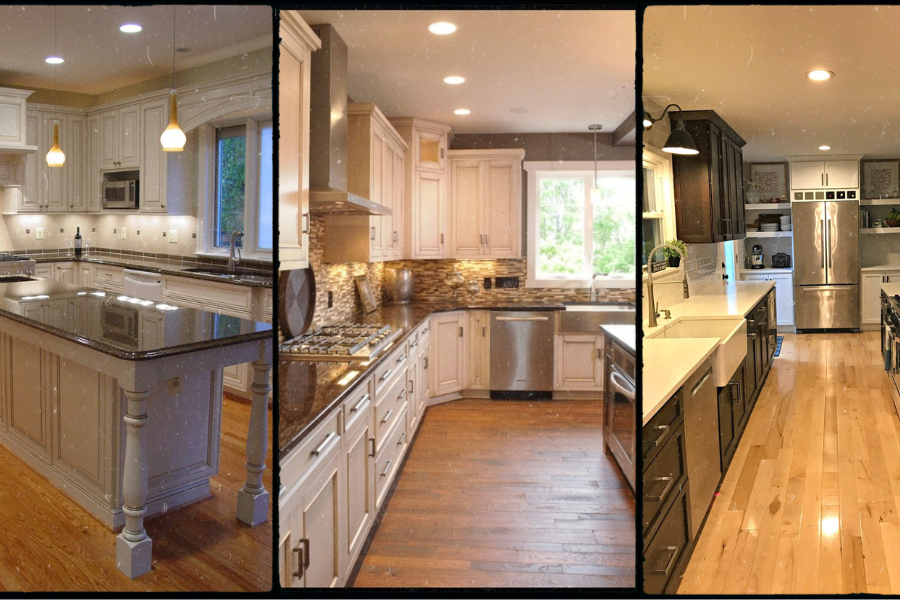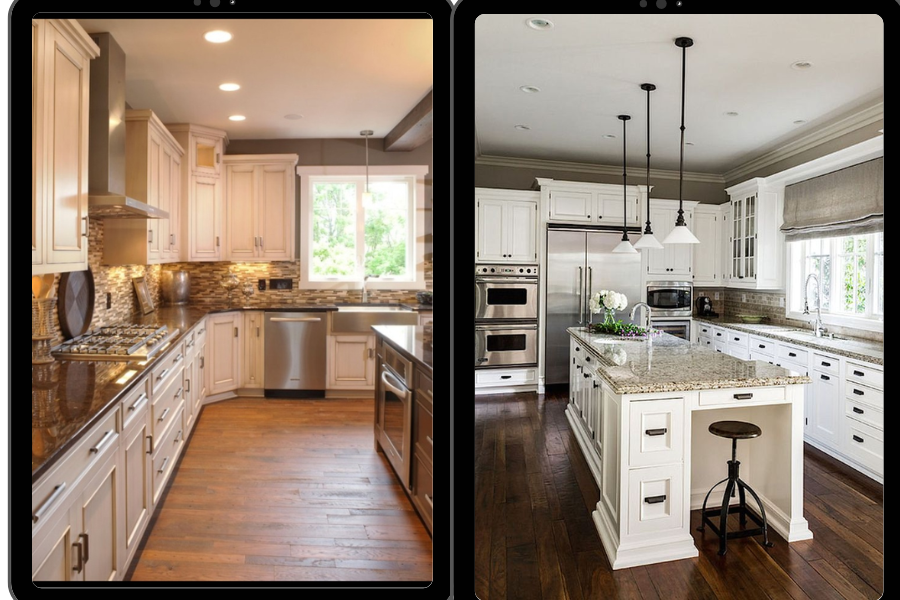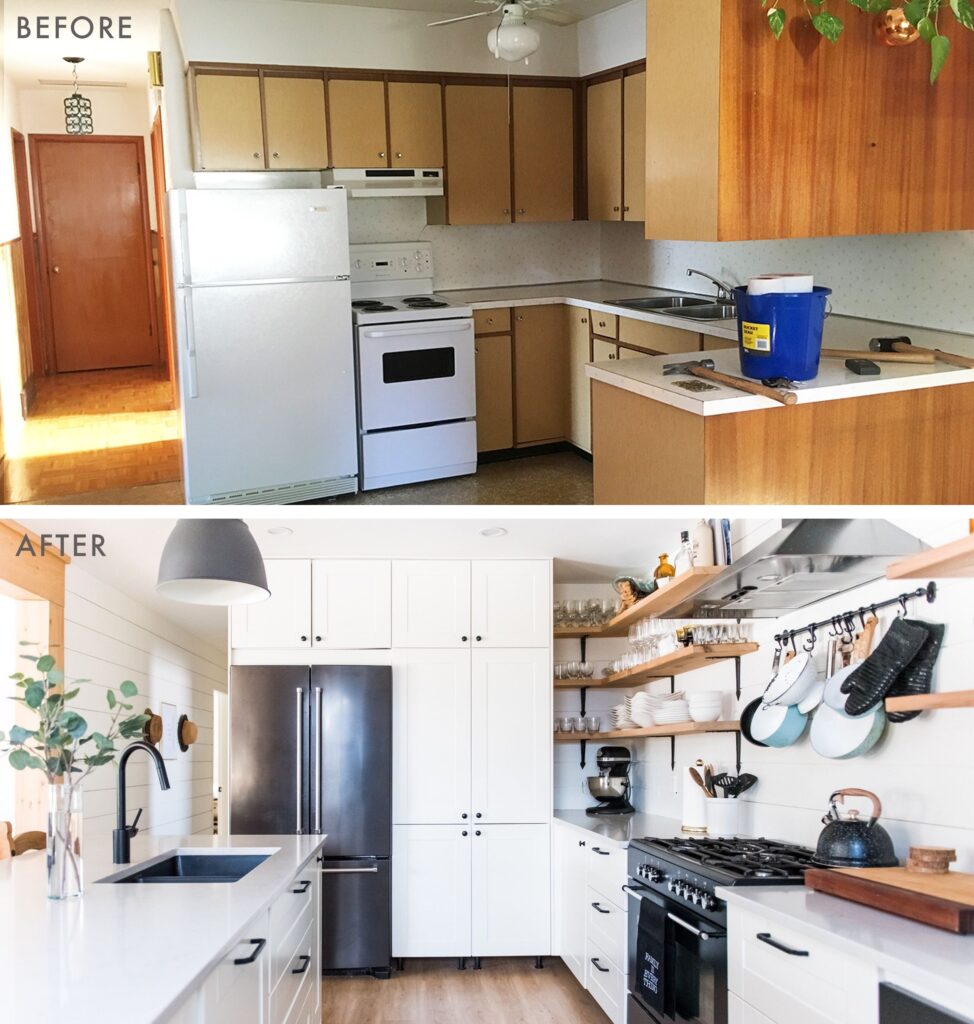Embarking on a kitchen remodel can be both exciting and daunting. The kitchen is the heart of the home, and updating it can enhance both the functionality and aesthetics of your living space. However, before diving into the process, there are several key insights to consider to ensure a smooth and successful renovation. This comprehensive guide will provide you with essential information and tips to help you navigate your kitchen remodeling journey with confidence.
Planning Your Kitchen Remodel

➤ Setting a Realistic Budget
One of the first steps in any kitchen remodeling project is setting a realistic budget. Determine how much you are willing to spend and allocate funds for various aspects of the remodel, such as materials, labor, and unexpected expenses. Having a clear budget will help you make informed decisions and prevent overspending.
Creating a detailed budget also allows you to identify areas where you can splurge and areas where you can save. For example, you might choose to invest in high-quality countertops but opt for more affordable cabinet hardware. It’s also wise to set aside a contingency fund of about 10-15% of your total budget to cover unexpected costs that may arise during the project.
➤ Defining Your Goals and Priorities
Identify what you want to achieve with your kitchen remodel. Are you looking to increase storage space, improve functionality, or enhance the overall aesthetics? Defining your goals and priorities will guide your decision-making process and ensure that your new kitchen meets your needs.
Consider how you use your kitchen daily and what changes would make it more functional. For instance, if you love to cook, you might prioritize high-end appliances and ample counter space. If you have a large family, additional storage and seating might be more important. By clearly defining your goals, you can create a kitchen that is tailored to your lifestyle.
➤ Creating a Detailed Plan
A well-thought-out plan is crucial for a successful kitchen remodel. This includes creating a layout that maximizes space and flow, selecting materials and finishes, and choosing appliances and fixtures. Working with a professional designer can help you create a plan that aligns with your vision and budget.
When planning the layout, consider the classic kitchen work triangle, which connects the sink, stove, and refrigerator. This design principle helps create an efficient workflow and minimizes unnecessary movement. Additionally, think about the placement of appliances, storage areas, and work zones to optimize the functionality of your kitchen.
Selecting Materials and Finishes
➤ Cabinets and Countertops
Cabinets and countertops are significant elements in any kitchen remodel. When choosing cabinets, consider factors such as material, style, and storage options. For countertops, evaluate durability, maintenance requirements, and aesthetics. Popular choices include granite, quartz, and laminate.
Custom cabinets offer the flexibility to design storage solutions that fit your specific needs, while stock cabinets provide a cost-effective alternative with quicker installation times. For countertops, granite and quartz are known for their durability and beauty, while laminate offers a budget-friendly option with a wide range of designs.
➤ Flooring Options
The flooring you choose should complement the overall design of your kitchen and be durable enough to withstand daily wear and tear. Common options include hardwood, tile, and vinyl. Each material has its pros and cons, so consider your lifestyle and preferences when making a decision.
Hardwood flooring adds warmth and elegance to a kitchen but requires regular maintenance to prevent scratches and water damage. Tile is durable and easy to clean but can be hard underfoot. Vinyl is a versatile and cost-effective option that can mimic the look of more expensive materials.
➤ Backsplash and Wall Finishes
A backsplash can add visual interest and protect your walls from splashes and spills. There are numerous materials to choose from, including tile, glass, and stainless steel. Additionally, consider the color and finish of your walls to create a cohesive look.
Tile backsplashes are popular for their durability and variety of designs, while glass backsplashes can add a sleek, modern touch. Stainless steel backsplashes are easy to clean and ideal for contemporary kitchens. When selecting wall finishes, think about how the colors and textures will complement your overall design scheme.

Hiring the Right Professionals
➤ Finding a Reputable Contractor
Hiring a reputable contractor is essential for a successful kitchen remodeling project. Research potential contractors, read reviews, and ask for recommendations from friends and family. Ensure that the contractor is licensed, insured, and experienced in kitchen renovations.
During the selection process, conduct interviews with potential contractors to gauge their communication skills and professionalism. Ask for references and visit completed projects to assess the quality of their work. A good contractor will provide a detailed estimate and timeline, and be transparent about potential challenges and costs.
➤ Working with Designers
Collaborating with a professional designer can elevate your kitchen remodel by bringing expertise and creativity to the table. Designers can help you optimize your space, select materials, and create a cohesive design that reflects your style.
A designer can also provide valuable insights into the latest trends and innovations in kitchen design. They can help you incorporate elements such as smart appliances, sustainable materials, and ergonomic features that enhance the functionality and aesthetics of your kitchen.
➤ Coordinating with Subcontractors
In addition to your primary contractor, you may need to hire subcontractors for specific tasks such as plumbing, electrical work, and cabinetry installation. Coordinating with these professionals is essential to ensure that the project progresses smoothly and on schedule.
Clear communication and coordination among all parties involved in the remodel are crucial. Establish a timeline and sequence of tasks to avoid delays and ensure that each phase of the project is completed efficiently. Regular meetings and updates with your contractor and subcontractors can help address any issues promptly.

Managing the Remodeling Process
➤ Preparing for Construction
Before construction begins, prepare your home for the remodeling process. This includes clearing out the kitchen, setting up a temporary cooking area, and protecting other areas of your home from dust and debris. Clear communication with your contractor about the timeline and expectations is also important.
Designate a specific area in your home for meal preparation and storage of kitchen essentials. Use plastic sheeting and tarps to protect furniture and flooring in adjacent rooms from dust and debris. Communicate with your contractor about work hours and access to your home to minimize disruptions.
➤ Staying Organized and Flexible
During the remodeling process, staying organized and flexible is key. Keep track of the project’s progress, address any issues promptly, and be prepared for unexpected challenges. Flexibility and open communication with your contractor will help ensure a successful outcome.
Maintain a project binder with all important documents, such as contracts, permits, receipts, and design plans. Regularly review the project schedule and budget to ensure that everything is on track. If unexpected issues arise, work with your contractor to find solutions and make necessary adjustments.
Maximizing Kitchen Functionality
➤ Optimizing Storage Solutions
Effective storage solutions can greatly enhance the functionality of your kitchen. Consider incorporating features such as pull-out shelves, lazy Susans, and custom cabinetry to maximize storage space and improve organization.
Deep drawers are ideal for storing pots and pans, while pull-out shelves make it easy to access items in the back of cabinets. A pantry with adjustable shelves can accommodate a variety of food items and kitchen supplies. Custom cabinetry allows you to create specialized storage solutions for your unique needs.
➤ Choosing Efficient Appliances
Selecting energy-efficient appliances not only reduces your environmental impact but also saves you money on utility bills. Look for appliances with the ENERGY STAR label and consider their size, features, and placement within your kitchen layout.
Energy-efficient refrigerators, dishwashers, and ovens use less energy and water, reducing your overall utility costs. Consider the size and layout of your kitchen when selecting appliances to ensure that they fit seamlessly into your design. Features such as double ovens, induction cooktops, and smart technology can enhance the functionality of your kitchen.
➤ Enhancing Lighting
Proper lighting is crucial for both functionality and ambiance in the kitchen. Incorporate a mix of task lighting, ambient lighting, and accent lighting to create a well-lit and inviting space. Under-cabinet lighting, pendant lights, and recessed lighting are popular choices.
Task lighting, such as under-cabinet lights, illuminates work areas for food preparation and cooking. Ambient lighting, such as ceiling fixtures and pendant lights, provides overall illumination for the room. Accent lighting, such as track lighting and LED strips, adds visual interest and highlights architectural features.
Key Considerations for Kitchen Remodeling
| Aspect | Considerations |
|---|---|
| Budget | Set a realistic budget and allocate funds for materials, labor, and unexpected expenses. |
| Goals and Priorities | Define your goals, such as increased storage, improved functionality, or enhanced aesthetics. |
| Materials and Finishes | Choose durable and aesthetically pleasing materials for cabinets, countertops, and flooring. |
| Hiring Professionals | Research and hire reputable contractors and designers to ensure a successful remodel. |
| Managing Process | Prepare for construction, stay organized, and maintain flexibility throughout the project. |
FAQs About Kitchen Remodeling
Q-1 How long does a kitchen remodel typically take?
The duration of a kitchen remodel can vary depending on the scope of the project. On average, a kitchen remodel can take anywhere from 6 to 12 weeks.
Q-2 What is the average cost of a kitchen remodel?
The cost of a kitchen remodel can vary widely based on factors such as the size of the kitchen, the materials used, and the complexity of the project. On average, a kitchen remodel can range from $20,000 to $50,000.
Q-3 Do I need a permit for a kitchen remodel?
In many cases, permits are required for kitchen remodeling projects, especially if they involve structural changes, electrical work, or plumbing. Check with your local building department to determine the specific requirements in your area.
Contact Us
Ready to start your kitchen remodeling project? Contact Chicago Kitchen Renovations today for a consultation. Our team of experienced professionals is here to help you create the kitchen of your dreams. Call us at (708) 289-5325 or email us at amg@amgproline.com. Let’s bring your vision to life!


